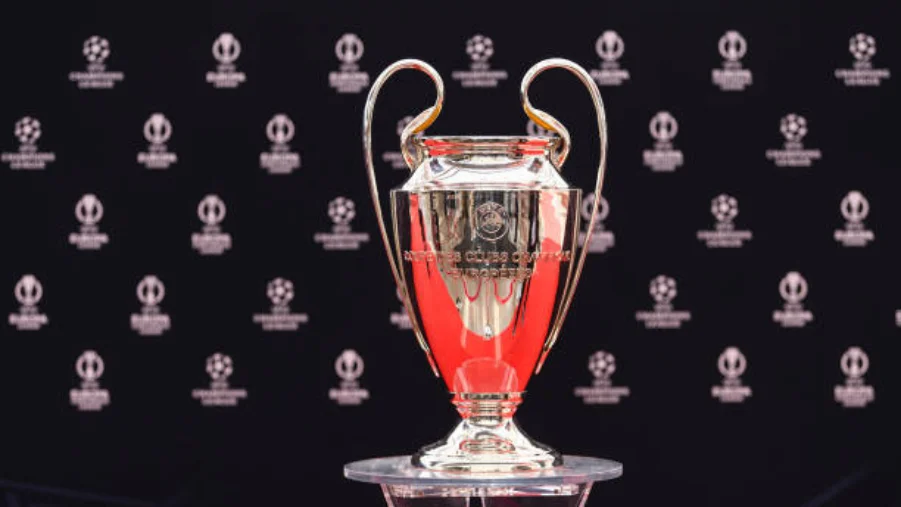
The Champions League is changing. Everyone’s favourite European competition will be played in a completely new and slightly complicated format from the 2024/25 season onwards.
The format
36 clubs will now be participating in a new league phase and will no longer play three teams twice like before, but will take on eight different teams, four at home and four away. This will see the total number of matches go up from 125 to 189, under the new format. It is expected that there will be weeks in the football calendar dedicated exclusively to the Champions League. This first league stage is going to end in January instead of December as was the norm before.
Matches are expected to be played across Tuesdays, Wednesdays and Thursdays which are the traditionally allocated to continental football.
The top eight sides after the league will have earned automatic qualification for the knockout stages, while the teams finishing in 9th to 24th will compete in two-legged play-offs to secure a place in the last 16 of the competition. Teams ranked from 25th -36th are eliminated from all competitions. The concept of dropping down to the Europa League isn’t there.
The draw

The draw for the new look tournament takes place on the 29th of August. The finalised fixture list will be released on Saturday August 31.
The way the draw works has also had to change. This is because in the current format, sticking with the old system would require a ridiculous amount of time and permutations and combinations.
Hence, as per this new system, UEFA is going to use a supercomputer to get most of the work done.
First, all 36 teams will be manually drawn with a physical ball on stage, like it used to happen under the previous
Then, for every team manually drawn, a designated automated software (through the supercomputer) will pick out eight opponents randomly from across the four pots. This will be displayed on the screen and the stage at the Grimaldi Forum in Monte Carlo (where the event for the draw is to be held) for all the viewers. The software then will decide which fixtures are to be played home and away.
The 36 clubs will be seeded into four different pots based on their club coefficient at the start of the season. The draw will start with Pot 1 (containing the strongest teams as well as the current holders of the Champions League) and will accordingly work its way down through the other pots.
Each team will be drawn against two different teams from each pot, playing one team at home and one away.
In the league phase, teams cannot face opponents from their own country and a maximum of two opponents from any other country.
The teams

A minimum of 10 of the 36 participating clubs come from Italy or Germany courtesy their coefficients and/or European performances. Shakhtar Donetsk and Benfica have qualified by virtue of the Champions League and Europa League winners having already qualified via their domestic league performance or as a result of their country’s collective performance in Europe this season.
Here are the teams that have already qualified for the competition.
UEFA Europa League winners: Atalanta
England: Man City, Arsenal, Liverpool, Aston Villa
Spain: Real Madrid (Champions League winners), Barcelona, Girona, Atletico Madrid
Germany: Leverkusen, Stuttgart, Bayern, Leipzig, Dortmund
Italy: Inter Milan, AC Milan, Bologna, Juventus
France: Paris Saint-Germain, Monaco, Brest
Netherlands: PSV Eindhoven, Feyenoord
Portugal: Sporting CP
Belgium: Club Brugge
Scotland: Celtic
Austria: Sturm Graz
Champions League winner rebalancing: Shakhtar Donetsk
Europa League winner rebalancing: Benfica
Based on UEFA coefficients, the pots look like this:
Pot One – Man City, Bayern Munich, Real Madrid, PSG, Liverpool, Inter Milan, Borussia Dortmund, RB Leipzig, Barcelona
Pot Two – Bayer Leverkusen, Atletico Madrid, Atlanta, Juventus, Benfica, Arsenal, Club Brugge, Shakhtar Donetsk, AC Milan
Pot Three – Feyenoord, Sporting CP, PSV, Lille*, PAOK*, Young Boys*, Celtic, Galatasaray*, Union SG*
Pot Four – Midtylland*, AS Monaco, Sparta Prague*, Aston Villa, Bologna, Girona, Stuttgart, Sturm Graz, Stade Brestois
*Assumption that the club with the higher coefficient wins their qualifier.
Seven teams will enter after winning a two-legged play-off.
This is the format that will decide who goes on to play in the final at the Allianz Arena in Munich on the 31st of May 2025.
What happens to the other European competitions?

There will be similar changes made to the formats of the Europa League and Europa Conference League as well, with 36 teams in each of them too.
Teams in the Europa League will have eight matches against eight different opponents in the league phase, same as the Champions League
In the Europa Conference League ,which has been renamed as the UEFA Conference League, the teams will have six matches against six different opponents in the league phase. The UEFA Conference League games will be played between September and December.
The knockout phases of the competitions will take place through the second half of the season and the finals will take place at the end of the club football season, as it used to happen.
